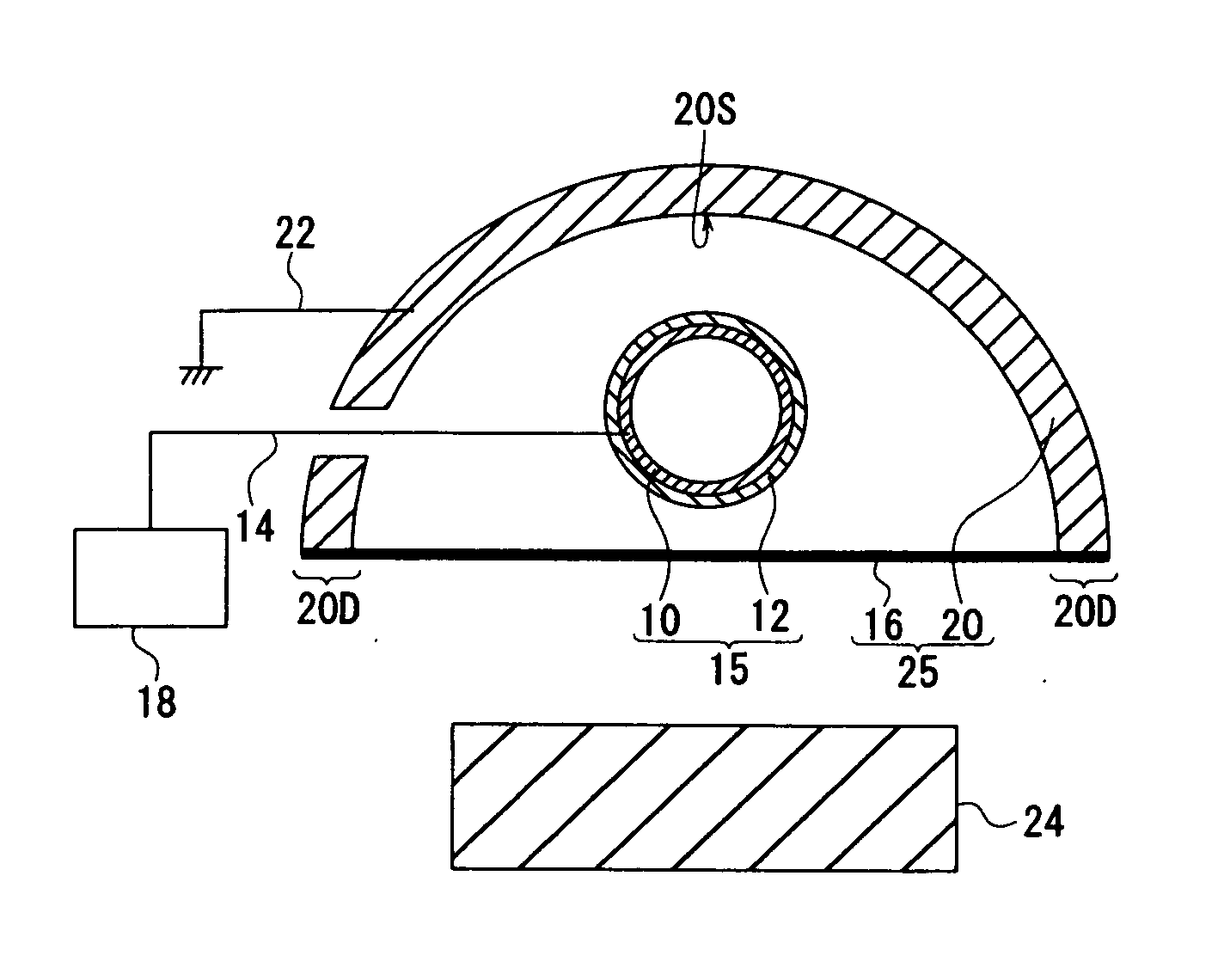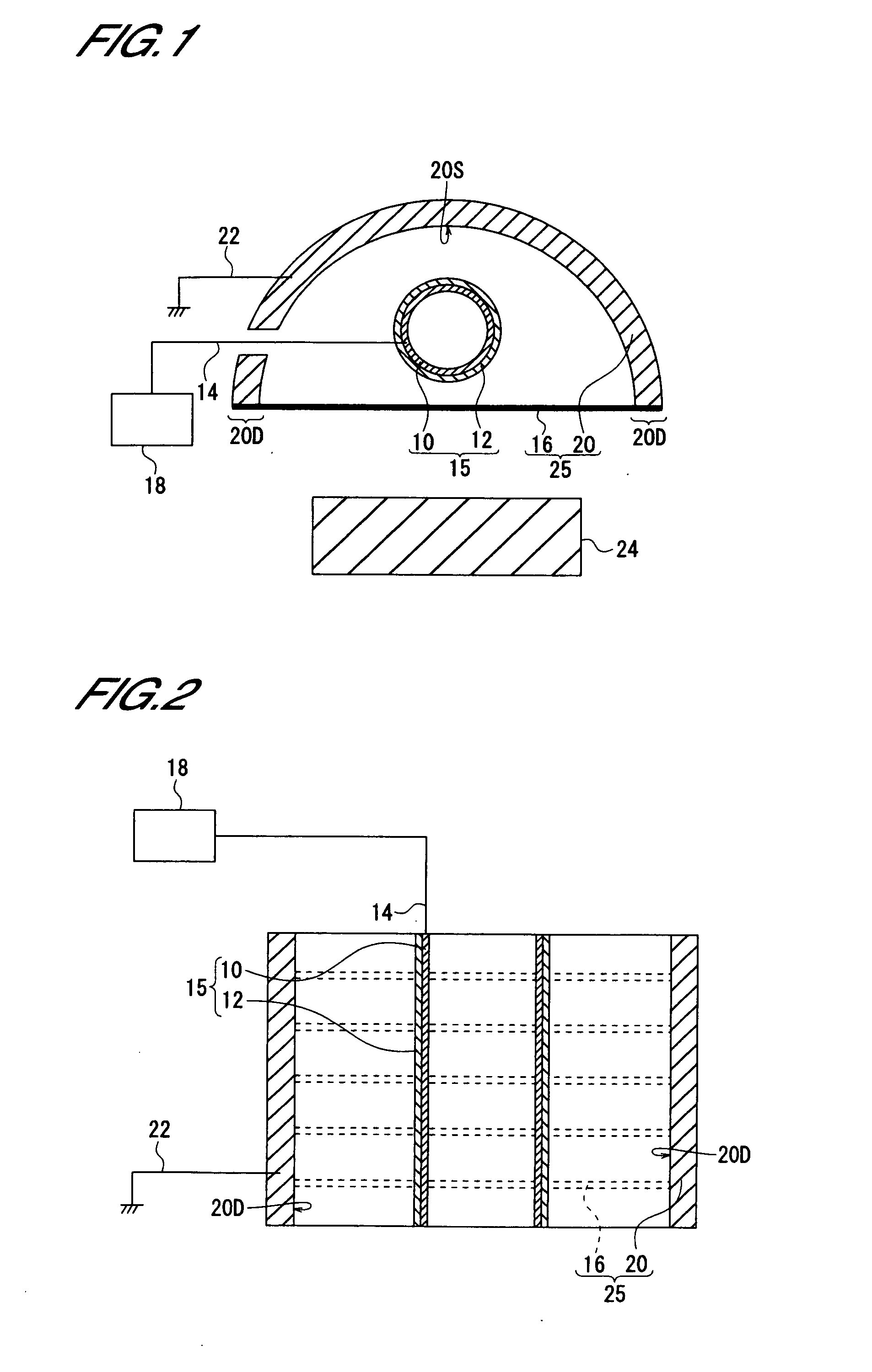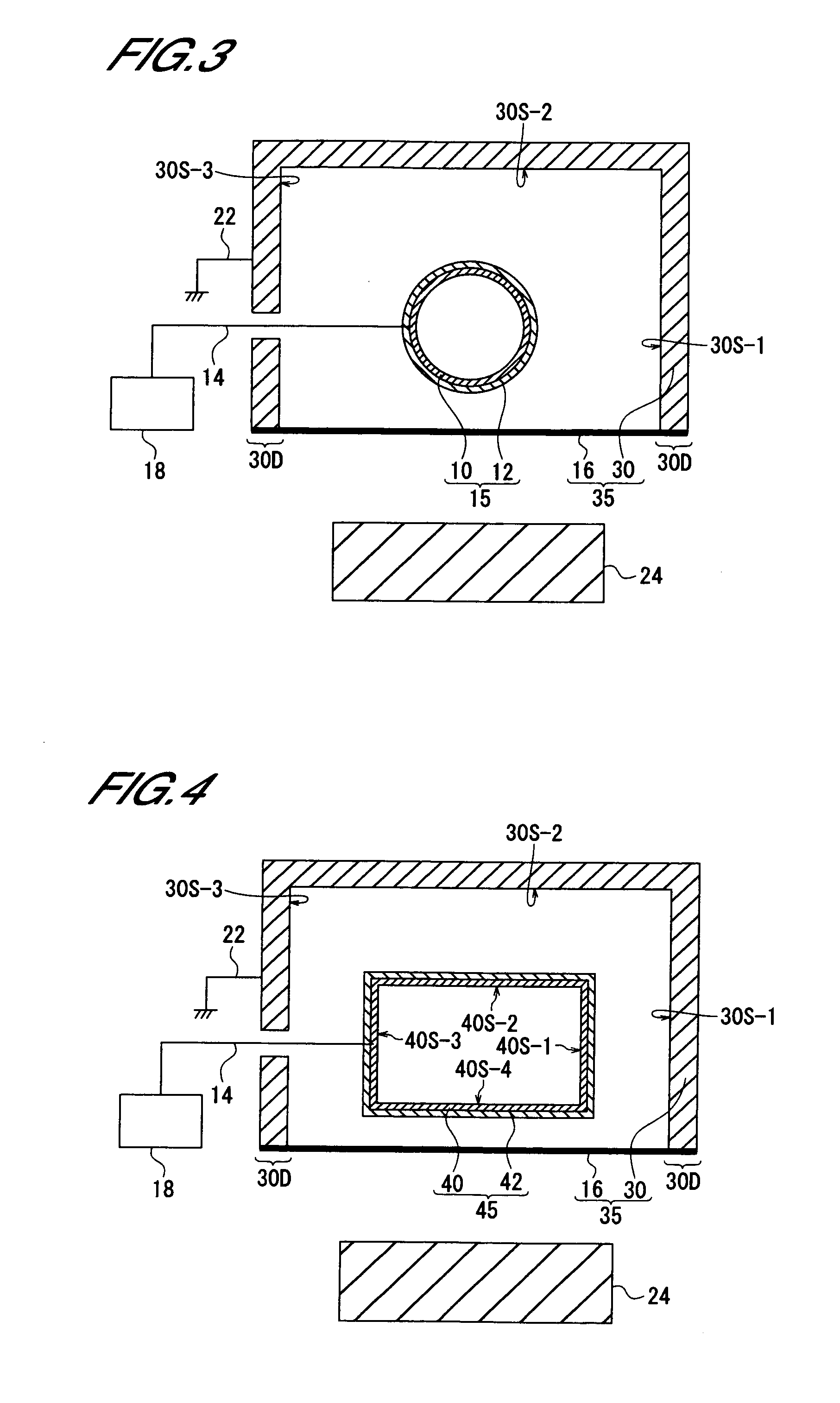Dielectric Barrier Discharge Excimer Light Source
- Summary
- Abstract
- Description
- Claims
- Application Information
AI Technical Summary
Benefits of technology
Problems solved by technology
Method used
Image
Examples
embodiment 1
[0096] The structure of the first dielectric barrier discharge excimer light source in accordance with the present invention and the operation principle thereof will be described hereinbelow with reference to FIG. 1 and FIG. 2. FIG. 1 is a schematic transverse sectional view obtained by cutting the first dielectric barrier discharge excimer light source in accordance with the present invention along the direction perpendicular to the longitudinal direction of the anode. FIG. 2 is a schematic vertical sectional view obtained by cutting the dielectric barrier discharge excimer light source in accordance with the present invention along the direction parallel to the longitudinal direction of the anode.
[0097] An anode electrode 10 is composed of a straight elongated cylindrical body and has a structure in which the outer periphery of the cylindrical body is covered with a dielectric body 12. An anode 15 comprises the anode electrode 10 and the dielectric body 12. In the explanation bel...
embodiment 2
[0111]FIG. 3 illustrates a structure of the second dielectric barrier discharge excimer light source in accordance with the present invention. FIG. 3 is a schematic transverse cross-sectional view of the second dielectric barrier discharge excimer light source in accordance with the present invention, this view being taken within a plane perpendicular to the longitudinal direction of the anode. Further, the schematic vertical cross-sectional view in the plane parallel to the longitudinal direction of the anode is similar to that shown in FIG. 2 and is therefore omitted. Furthermore, as a rule, in the explanation hereinbelow, only the transverse cross-sectional view of the light source is shown, and the vertical cross-sectional view similar to that shown in FIG. 2 is omitted unless considered especially necessary.
[0112] A feature of the second dielectric barrier discharge excimer light source comprising an anode electrode 10 composed of a straight long hollow cylindrical body covere...
embodiment 3
[0114]FIG. 4 illustrates a structure of the third dielectric barrier discharge excimer light source in accordance with the present invention. FIG. 4 is a schematic transverse cross-sectional view of the third dielectric barrier discharge excimer light source in accordance with the present invention, which is perpendicular to the longitudinal direction of the anode. Further, the schematic vertical cross-sectional view in the plane parallel to the longitudinal direction of the anode is similar to that shown in FIG. 2 and is therefore omitted.
[0115] A feature of the third dielectric barrier discharge excimer light source comprising an anode electrode 40 composed of a straight long hollow cylindrical body covered with a dielectric body and a long cathode portion 30 surrounding the anode electrode 40 is the same as in the above-described first dielectric barrier discharge excimer light source. However, the shapes of the anode electrode 40 and the cathode portion 30 are different. The an...
PUM
 Login to View More
Login to View More Abstract
Description
Claims
Application Information
 Login to View More
Login to View More - R&D
- Intellectual Property
- Life Sciences
- Materials
- Tech Scout
- Unparalleled Data Quality
- Higher Quality Content
- 60% Fewer Hallucinations
Browse by: Latest US Patents, China's latest patents, Technical Efficacy Thesaurus, Application Domain, Technology Topic, Popular Technical Reports.
© 2025 PatSnap. All rights reserved.Legal|Privacy policy|Modern Slavery Act Transparency Statement|Sitemap|About US| Contact US: help@patsnap.com



